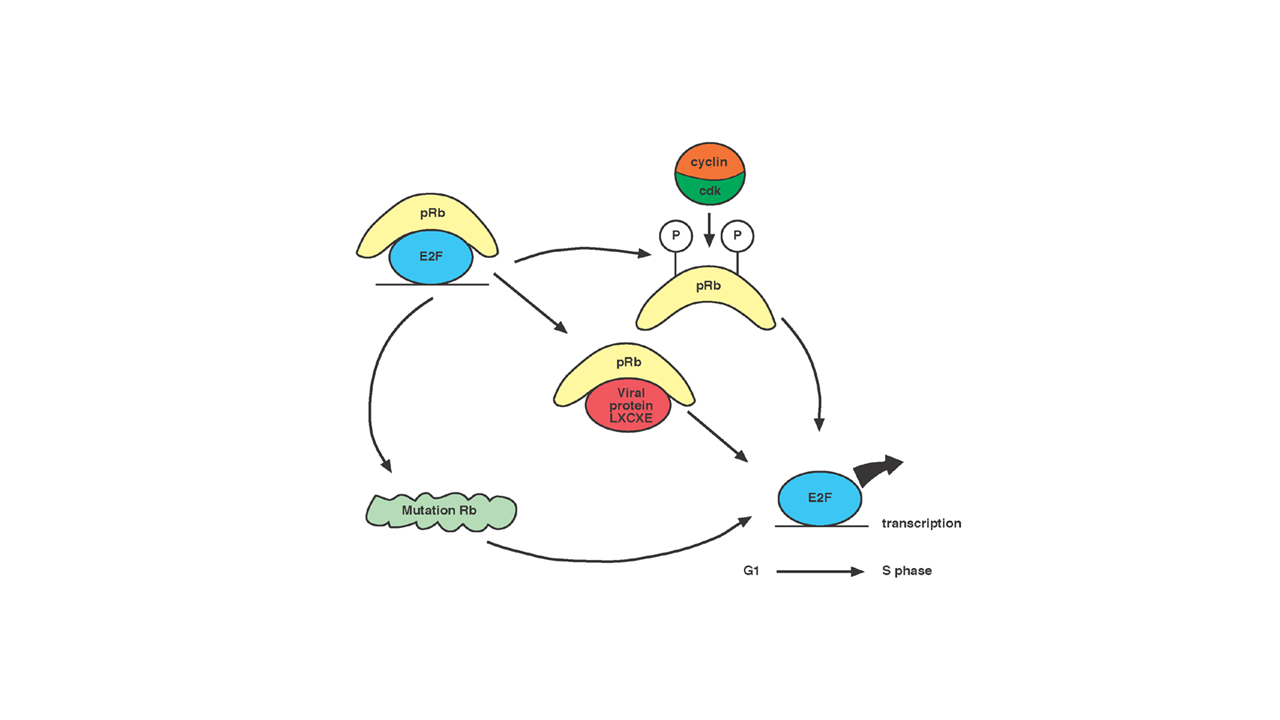Retinoblastoma is cancer of the retina, which is the light-sensitive region at the back of the eye. In the normal stages of a baby’s development, retinal cells grow quickly and then stop. However, in rare cases one or more cells continue to grow and form a cancer called retinoblastoma.
In terms of development, three processes appear important:
Phosphorylation of the retinoblastoma protein (i.e. pRb). This process prevents the pRb from binding to the E2F molecule, a linker protein in the cell. The net effect is genetic activation to enable the process of transition. The phosphorylation of pRb facilitates the change from the ‘G1 Phase’ to the ‘S Phase’ to promote cellular proliferation and neoplasm development.
pRb association with viral proteins that enter the cell. Such binding can result in the free E2F associating with the genetic material within the cell and supporting the process of transcription to move the cell into the ‘S Phase’.
Mutation(s) may also occur and in this case the E2F is once again unable to link with the pRb molecule and as such is free to switch on genetic transcription allowing for ‘S Phase’ initiation.
The retinoblastoma (pRb) protein and associated interactions that influence transcription

